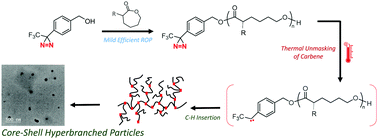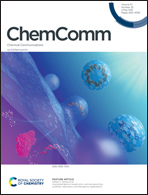Thermally-induced hyperbranching of bromine-containing polyesters by insertion of in situ generated chain-end carbenes†
Abstract
Hyperbranched, biodegradable PCL-based polymers are obtained through a random but invasive migration of an in situ generated carbene end group which is unmasked via the thermolysis of its precursor diazirine moiety. These hyperbranched cores are used as macroinitiators for ‘grafting-from’ polymerisation using controlled radical polymerisation to achieve amphiphilic copolymers which can subsequently be self-assembled into spherical core–shell micelles.



 Please wait while we load your content...
Please wait while we load your content...